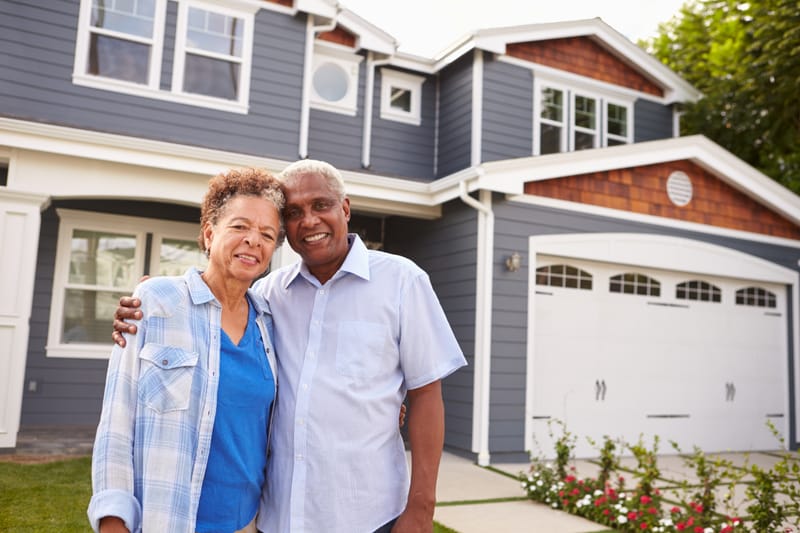
What Aging Home Buyers Should Really Be Looking for in a New Property
Somewhere between the first house and the final one, things change. You stop imagining yourself hosting big backyard barbecues and start wondering how hard it’ll be to reach the second-floor bathroom at 78. Aging in place isn’t just a catchphrase—it’s an ambition rooted in comfort, autonomy, and practicality. The challenge is knowing what to look for when you’re scanning listings and walking through open houses. It's not about shrinking expectations, it’s about finding a home that grows with you, not away from you. So, if you're heading toward retirement and want your next house to be your last, here’s what you need to keep in mind.
Open It Up
You want space, but not the kind you need to leap or duck through. Start with layout—homes with wide hallways, fewer sharp corners, and smooth flooring transitions feel easier because they are. If a walker or wheelchair ever becomes part of your day-to-day, you’ll be grateful for home modifications for seniors aging in place that let you glide room to room without incident. Check the kitchen too. Can you pivot from stove to sink without bumping into anything? Accessibility doesn’t mean sterile; it means elegant efficiency.
Downstairs Is Better
Don’t let stairs become your enemy. Even if you're still spry, a home that puts everything on one level is a wise hedge against the future. Look for homes that include all the essentials—bedroom, full bathroom, laundry—on the main floor. You might not need it now, but you’ll want it later. There’s real peace of mind in single-story homes that help seniors age in place because they reduce reliance on physical stamina to meet daily needs. You deserve a layout that lets you stay put.
Get Smart with Appliances
It might not seem like a big deal, but fumbling with clunky knobs or outdated controls gets old fast. New appliances come with more than sleek finishes—they’re easier to use, more efficient, and often include safety features that just make life smoother. Prioritize homes that have modern ranges with front-facing controls, fridges with pull-out drawers, and washer-dryer setups you don’t need to crouch for. Also, consider a home warranty with appliance coverage in case a breakdown strikes when you least expect it. Look for policies that handle the removal of defective equipment and issues caused by poor installation or past repairs. Think of it as insurance against age-related guesswork.
Bathrooms Matter Most
This is the one room where risk spikes and injuries multiply. Step-in tubs, zero-entry showers, grab bars, and non-slip flooring aren’t luxury items—they’re necessities dressed as conveniences. Homes that already have those features or at least make retrofitting them easy are worth your attention. Consider how close the bathroom is to the bedroom, and whether there's room to maneuver if mobility changes. If you're unsure what to prioritize, a quick read-through of bathroom modifications for seniors can help focus your checklist. Safety isn't the opposite of style—it can live right alongside it.
Let There Be (Better) Light
Dim hallways and dark stairwells are an accident waiting to happen. As you walk through a potential new home, notice the natural light—but also ask what the overhead fixtures are doing to help. Good lighting, especially in transition zones and workspaces like the kitchen or laundry room, cuts down on trip hazards and strain. Consider the color temperature too, since yellowish bulbs can mask contrast while whiter ones can increase visibility. Studies have shown that lighting improvements may reduce falls, which should matter as much as granite counters. One flick of a switch can make all the difference.
Put the House to Work for You
Forget gadgets for gadget’s sake—smart home tech can take real weight off your shoulders. Look for homes with pre-installed smart thermostats, lights, and door locks, or at least wiring that makes adding those features simple. These systems let you control your environment without getting up, fumbling with keys, or navigating dim hallways. The trick is to focus on function over flash. A roundup of smart home technology for older adults shows how these tools can gently extend your independence. It’s the little stuff, repeated every day, that adds up to ease.
Stay Close to Care
Even if you're healthy now, living far from a hospital or clinic can make routine care a chore and emergencies downright scary. A short drive to a well-staffed ER might not seem crucial when you're buying, but it can become a lifeline later. Ask your agent for maps that show more than just schools and shopping. Healthcare access should be on the checklist, not an afterthought. The importance of nearby medical facilities becomes obvious the moment something goes wrong. And something always goes wrong—might as well plan for it.
You’re not downsizing. You’re refining. Finding a home that makes room for aging isn't a compromise, it’s an investment in longevity, comfort, and self-respect. It means fewer surprises and less strain, more ease and more time doing what you want instead of troubleshooting what you can't. Forget granite, forget open concepts, forget trend pieces—focus on what’ll let you stay rooted. And if you do it right, you won’t just age in place, you’ll live in place.
By: Annabelle Harris